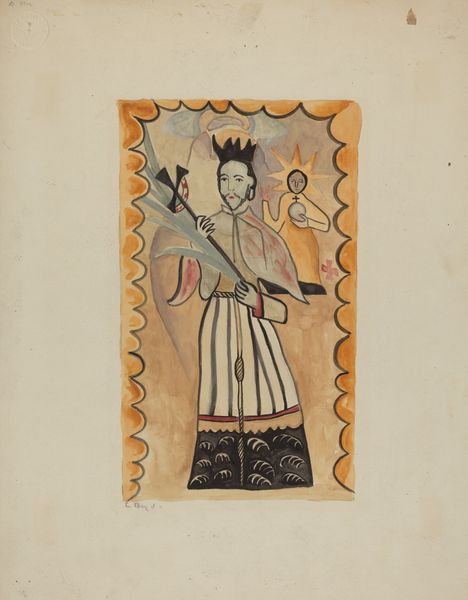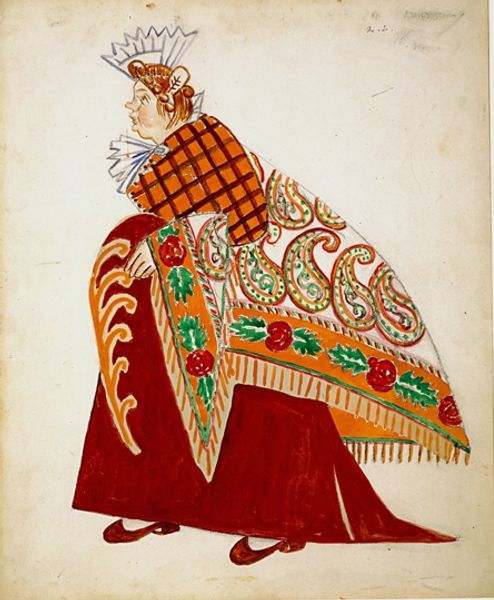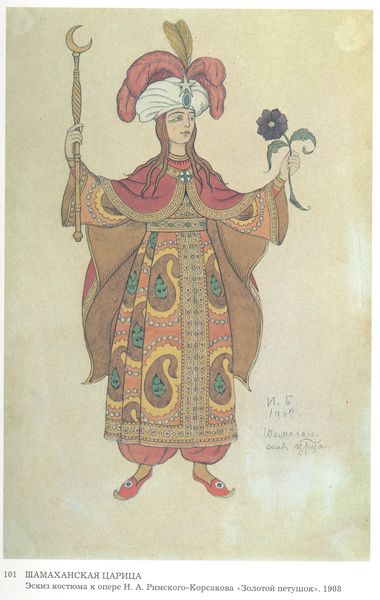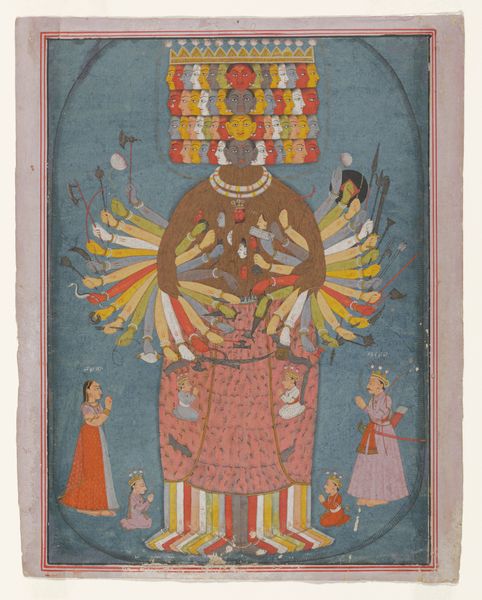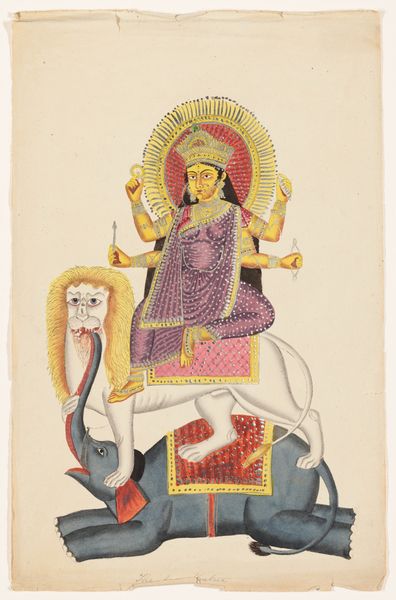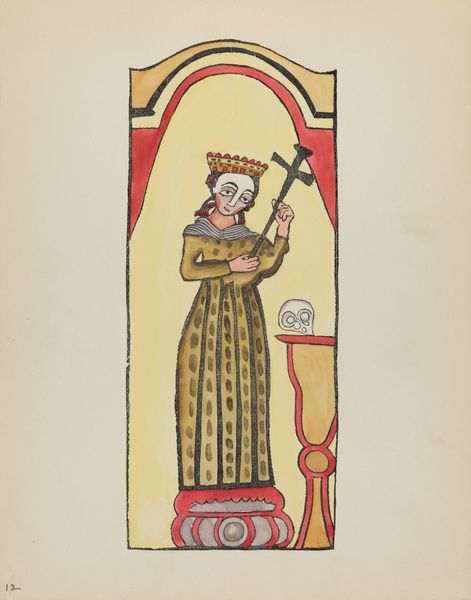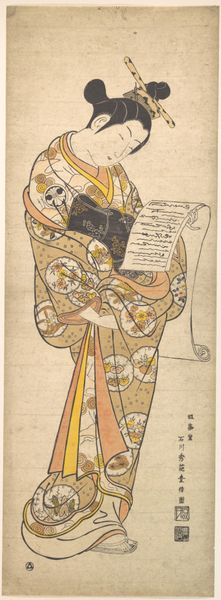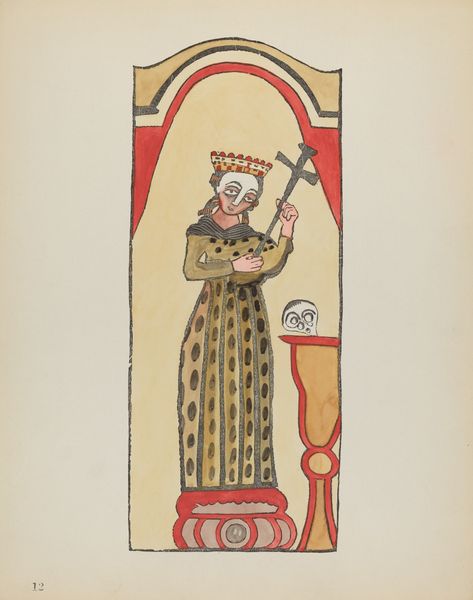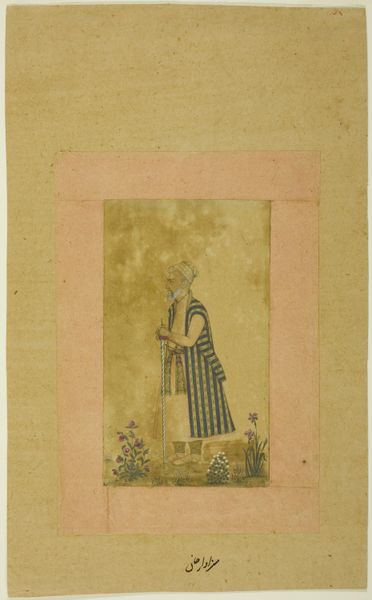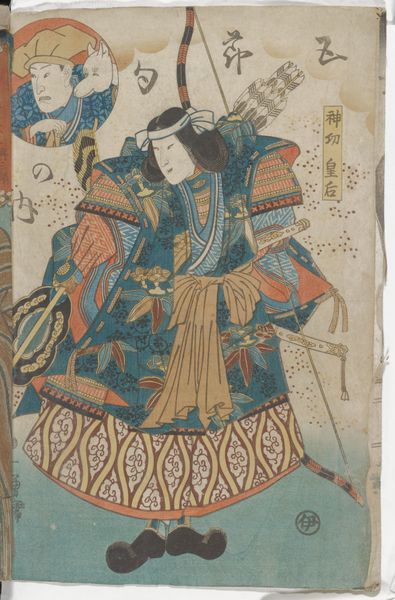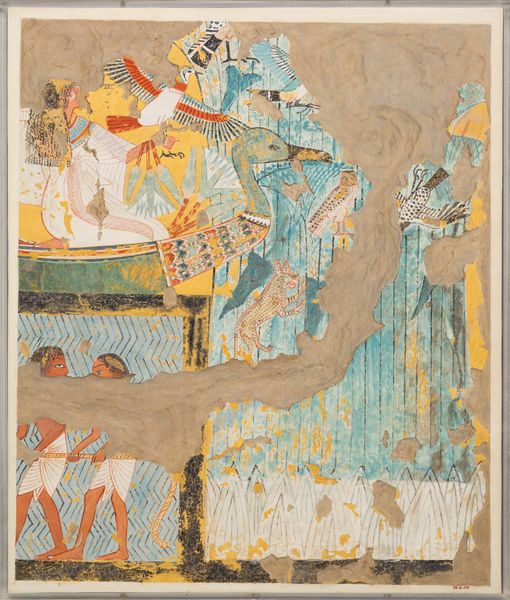
drawing, acrylic-paint, watercolor, mural
#
drawing
#
caricature
#
acrylic-paint
#
cartoon sketch
#
figuration
#
watercolor
#
folk-art
#
academic-art
#
mural
Dimensions: overall: 35.5 x 27.9 cm (14 x 11 in.)
Copyright: National Gallery of Art: CC0 1.0
Curator: This is a fascinating piece. "St. John Nepomucene-Painted on Buffalo Hide Prior to 1800", likely painted between 1935 and 1942 by E. Boyd, using acrylic paint and watercolor. What stands out to you about it? Editor: The starkness of the colors against the hide, maybe? And how the figure seems to float. What strikes me, though, is the way European iconography meets Indigenous artistic tradition. How do you interpret the choices behind depicting a saint on such an unusual surface? Curator: Exactly! It's the visual clash of cultures that's so compelling here. Think about the power dynamics inherent in depicting a European saint, a symbol of colonial power, on a buffalo hide, a material deeply sacred to many Indigenous communities. How does it rewrite history? Editor: Rewriting history… That’s interesting. It suggests resistance, doesn’t it? A way of subverting the dominant narrative by embedding it within a pre-existing cultural framework? Curator: Precisely. What if it isn't just about faith, but a statement about cultural endurance? About adapting and absorbing, yet retaining a distinct identity? Consider how this approach reclaims ownership. Who has the authority to represent, to depict? Editor: So the artist, by choosing buffalo hide, isn't just creating an artwork, but making a statement about cultural resilience in the face of colonization? Curator: Indeed. The hide becomes a powerful symbol of resistance. It silently argues for the survival and adaptation of Indigenous artistic expression. In doing so, this artwork facilitates dialogue across seemingly distinct worlds and temporalities. Editor: I’m struck by the multiple layers of meaning here; it’s more than just a religious icon, it's a complex layering of identity, resistance, and cultural negotiation. Thanks for expanding my perspective!
Comments
No comments
Be the first to comment and join the conversation on the ultimate creative platform.

